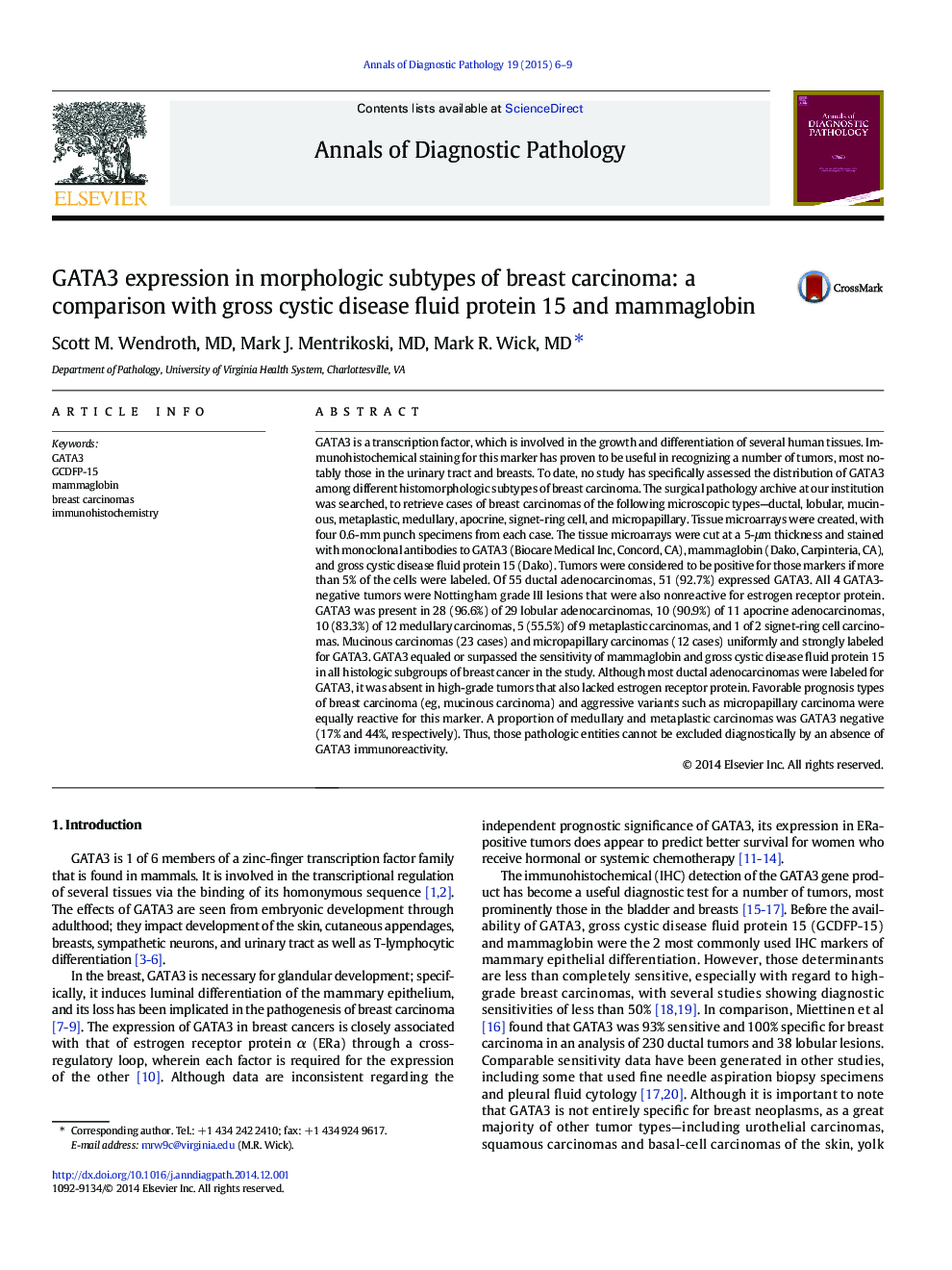| Article ID | Journal | Published Year | Pages | File Type |
|---|---|---|---|---|
| 4129936 | Annals of Diagnostic Pathology | 2015 | 4 Pages |
GATA3 is a transcription factor, which is involved in the growth and differentiation of several human tissues. Immunohistochemical staining for this marker has proven to be useful in recognizing a number of tumors, most notably those in the urinary tract and breasts. To date, no study has specifically assessed the distribution of GATA3 among different histomorphologic subtypes of breast carcinoma. The surgical pathology archive at our institution was searched, to retrieve cases of breast carcinomas of the following microscopic types—ductal, lobular, mucinous, metaplastic, medullary, apocrine, signet-ring cell, and micropapillary. Tissue microarrays were created, with four 0.6-mm punch specimens from each case. The tissue microarrays were cut at a 5-μm thickness and stained with monoclonal antibodies to GATA3 (Biocare Medical Inc, Concord, CA), mammaglobin (Dako, Carpinteria, CA), and gross cystic disease fluid protein 15 (Dako). Tumors were considered to be positive for those markers if more than 5% of the cells were labeled. Of 55 ductal adenocarcinomas, 51 (92.7%) expressed GATA3. All 4 GATA3-negative tumors were Nottingham grade III lesions that were also nonreactive for estrogen receptor protein. GATA3 was present in 28 (96.6%) of 29 lobular adenocarcinomas, 10 (90.9%) of 11 apocrine adenocarcinomas, 10 (83.3%) of 12 medullary carcinomas, 5 (55.5%) of 9 metaplastic carcinomas, and 1 of 2 signet-ring cell carcinomas. Mucinous carcinomas (23 cases) and micropapillary carcinomas (12 cases) uniformly and strongly labeled for GATA3. GATA3 equaled or surpassed the sensitivity of mammaglobin and gross cystic disease fluid protein 15 in all histologic subgroups of breast cancer in the study. Although most ductal adenocarcinomas were labeled for GATA3, it was absent in high-grade tumors that also lacked estrogen receptor protein. Favorable prognosis types of breast carcinoma (eg, mucinous carcinoma) and aggressive variants such as micropapillary carcinoma were equally reactive for this marker. A proportion of medullary and metaplastic carcinomas was GATA3 negative (17% and 44%, respectively). Thus, those pathologic entities cannot be excluded diagnostically by an absence of GATA3 immunoreactivity.
